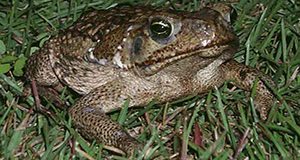Global trade and travel transport plants and animals from native ranges to new ecosystems. About 10 to 20% of nonnative (exotic, alien) species that arrive in new locales become invasive, meaning they are likely to harm the environment, economy, or public health. Preventing the introduction of invasive species is the most effective way to protect native biodiversity and ecosystem integrity. Once an invader begins to establish and spread, its control costs increase rapidly. Florida ports are the entry points for about half of the reptiles, arachnids, insects, and crustaceans imported into the United States. These arrivals, coupled with hospitable climate and habitats, have made Florida home to more invasive species than any other state but Hawaii. While it is too late to prevent the invasion of Burmese pythons and Argentine black and white tegus, we can act to prevent other potentially destructive species from establishing. This 6-page fact sheet written by Venetia Briggs-Gonzalez, Kyle Allen, Rebecca G. Harvey, and Frank J. Mazzotti and published by the Department of Wildlife Ecology and Conservation explains how to assess the risk that a given invasive species presents to the environment and how to develop and use risk-screening tools to reduce the harmful effects of invasions or, better yet, prevent them entirely.
http://edis.ifas.ufl.edu/uw419
